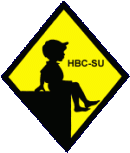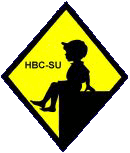
Egypt was conquered by the Arabs (7th century). The Arabs gradually Islamicized Egyptian society. Islam became the dominant religion, but Coptic Christains continued to be an important minority. We have only some limited information about Arab schools. The Islamic educational heritage is basically a system of transmitting existing culture amnd was not designed to encourage children to question. This was not unlike Christian Europe at the time, but unlke Europe this did not change over time. A major event was the founding of Al-Azhar University mosque (972). This was earlier than the foundiung of the great European universities. Al-Azhar played a central role in shaping Egypt's religious, educational, and cultural life. The Islamic educational system began with the kuttabs (mosque or Quranic schools), the madrasas (religious schools), and the Sufi (mystical orders). The approach centered on memorization and recitation. This was the traditional methods for learning the Koran There was no room for experimentation, problem-solving analysis, or practical education. For devoted Muslims there was not need for such education. The Koran was seen as God's final and perfect relevation to humanity. Thus there was no real need for experimentation or problem solving. Problems were already solved in the Koran. This did not make much difference in the 10th century when Christians had essentislly the same outlook. It did begin to make a difference after the 13th century when Islamic religious scholars began to actively discourage science at the same time the Renaisance began to blosom in Europe. Similar religious trends developed throughout the Arab world. The use of Arabic helped to develop a sense of the common Arab nation in sharp contrast to the gradual development of nation states in Europe. Education through the 18th century the ulama (the learned Islamic elite, a community of legal scholars of Islam and the Sharia) and Coptic clergy controlled education in Egypt. There was no teaching of science and the growing body of scientific knowledge coming out of Europe. Egypt's major educational institutions were theological seminaries, but both mosques and churches without government support supported basic schools where boys could learn to read and write Arabic, to do basic math, and to memorize long passages from the Koran or Bible. Girls were excluded from these schools. The schools were most prevalent in the cities and towns, but also existed at the village level.
Related Style Pages in the Boys' Historical Web Site
[Long pants suits]
[Knicker suits]
[Short pants suits]
[Socks]
[Eton suits]
[Jacket and trousers]
[Blazer]
[School sandals]
Navigate the Boys' Historical Clothing Web Page
[Return to the Main Egyptian school page]
[Return to the Main ancient Egypt page]
[Introduction]
[Activities]
[Biographies]
[Chronology]
[Cloth and textiles]
[Clothing styles]
[Countries]
[Topics]
[Bibliographies]
[Contributions]
[FAQs]
[Glossaries]
[Images]
[Links]
[Registration]
[Tools]
[Boys' Clothing Home]
